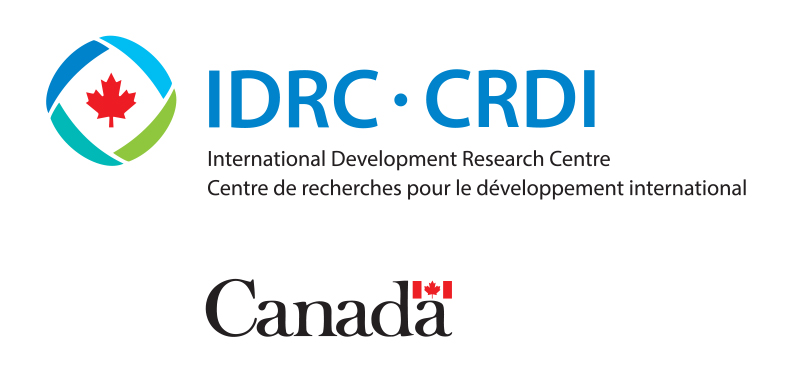Recommendations
- To modernise agriculture, the Ministry of Agriculture and the Kenya Agricultural and Livestock Research Organization should invest in digital infrastructure, new technologies and sustainable practices.
- The government should train, fund and support youth skills and talent in sports and other fields through the Ministry of Education, the Commission for University Education and the Technical and Vocational Education and Training Authority.
- The government should collaborate with companies such as Safaricom, Telkom and Airtel and support research and startups in technology such as the Kenya Medical Research Institute, Jomo Kenyatta University of Agriculture and Technology, University of Nairobi and Kenyatta University.
- The ministries of labour and social protection and of public service, gender and affirmative action should expand social safety nets and services for vulnerable groups, working with non-governmental organisations such as Amref Health Africa for community healthcare and empowerment.
Executive summary
This policy briefing emerges from the ‘Youth and Social Justice Futures: Identifying Future Skills and Training in Africa’ project, which engaged Kenyan youth to envision pathways for inclusive development. The research involved a collaborative exploration of anticipatory systems, skills needs and policy orientations using methods such as Youth Futures Literacy Labs and the Three Horizons Framework. While Kenya faces economic constraints, it also has a youthful population, technological leadership and natural resources. However, strategic efforts are needed to leverage these strengths through investments in youth-inclusive policies.
Key priorities include modernising agriculture, expanding skills training aligned with market needs, advancing technology and digital access and strengthening social safety nets. Upgrading agriculture requires adopting the relevant technology and sustainability practices. Persistent skills mismatches underscore the need to foster technical education and entrepreneurship. Despite progress, more is needed to achieve universal digital access and tech literacy. Developing Artificial Intelligence should also address local challenges. A holistic approach is vital to empower youth and achieve social justice.
This briefing offers recommendations for the government and stakeholders to collaborate
with youth in building an equitable, resilient future. Targeted investments in youth
capabilities, livelihoods and wellbeing through a national youth empowerment strategy can
drive sustainable, human-centred development. By engaging youth voices and applying
foresight, Kenya can make progress inclusive.
Introduction
Kenya is at a pivotal juncture in terms of engaging its large, youthful population in inclusive development. Over 70% of Kenyans are under 35 years old. However, a youth unemployment rate of over 40% reveals systemic barriers inhibiting economic opportunities.1Kenya National Bureau of Statistics, “Economic Survey 2018”, April 26, 2018. Kenya’s potential demographic dividend risks becoming a liability without strategic action.
Agriculture accounts for over one-third of gross domestic product and three-quarters of export earnings,2The World Bank in Kenya, “Overview”, https://www.worldbank.org/en/country/kenya/overview. but faces environmental threats and climate shocks, such as recurrent droughts. Low productivity3Izzy Birch, Agricultural Productivity in Kenya: Barriers and Opportunities, K4D Helpdesk Report (London: UK Department for International Development, December 2018). underscores the urgent need to modernise the sector through climate-smart practices. Meanwhile, the job market’s evolution demands modern skills, even as quality education and training access remains limited. Rapid population growth, urbanisation, inequality, poverty, ethnic divisions and health burdens such as HIV/AIDS and malnutrition strain social cohesion. Environmental challenges such as deforestation, water scarcity and pollution also threaten sustainable progress.4UNICEF, UNICEF Kenya Country Office Annual Report 2019 (Nairobi: UNICEF Kenya, 2020). This policy briefing helps fill that gap by sharing insights from Kenyan youth engagement in the futuresinformed participatory research project spanning six countries in East and Southern Africa. The project aimed to reimagine youth skills and social justice futures using foresight methodologies such as the Three Horizons Framework, Youth Futures Literacy Labs, causal layered analysis and visioning exercises. Kenyan youth perspectives were gathered through workshops and strategy engagement activities in Kenya.
Kenya has notable strengths to help it navigate these hurdles. It has emerged as a regional leader in technology and innovation, aided by rapidly expanding mobile and internet connectivity. Its vibrant technology start-up ecosystem shows immense promise.5International Trade Administration, “Kenya – Country Commercial Guide: Information, Communications and Technology (ICT)”, August 19, 2022. Other assets include natural resources, cultural heritage, regional integration through organisations such as the East African Community and the African Continental Free Trade Area and abundant renewable energy potential such as geothermal,6Geothermal Development Company, “Geothermal Development”, https://www.gdc.co.ke/projects.html. solar and wind.
But Kenya’s future trajectory depends on how well it leverages its strengths while addressing persisting weaknesses. Investing in infrastructure, education, healthcare and technology is vital to harness its capacities fully. Applying futures thinking and foresight tools can aid in navigating the complex, uncertain challenges facing youth. Decisions made today will determine whether youth are engaged to drive inclusive progress.
Reflections on the project
Youth voices hold invaluable insights for charting Kenya’s future course. Through the participatory workshops conducted in Kenya as part of project,7International Development Research Centre, “Youth and Social Justice Futures: Identifying Future Skills, Training Needs and Orientations in Africa”, November 15, 2022. Kenyan youth from diverse backgrounds shared their aspirations, challenges and recommendations. Their perspectives provide a window into priorities requiring strategic policy focus.
Futures scenario planning8UNESCO, “Futures Literacy”, https://en.unesco.org/futuresliteracy/about. and visioning exercises provided insightful windows into how rapid changes could impact youth livelihoods and wellbeing in coming decades. Examining alternative futures through different lenses heightened awareness of both threats and possibilities. For example, scenarios around climate change, technological disruption, demographic shifts and governance provoked thoughtful discussion on building resilience amid uncertainty. Participatory stakeholder mapping and problem-solving methodologies applied in the workshops also proved valuable. Engaging diverse youth voices from across the country surfaced a wealth of issues and locally relevant solutions. Dialogue on priorities in agriculture, education, health and other domains highlighted both common ground and regional nuances. The collaborative research, analysis and strategy development process cultivated critical thinking and cooperation.
Perhaps most importantly, facilitating youth participation in co-creating their own preferred futures helped spark inspiration and agency. Envisioning positive visions where systemic barriers are overcome and youth potentials are unlocked fostered optimism that more just and prosperous futures can be realised through coordinated, multi-sectoral actions. There are important lessons from this project that should be conveyed to policymakers and fellow youth in Kenya. Firstly, applying futures lenses and participatory approaches to challenges empowers ownership of solutions. Youth demonstrate tremendous capability and commitment to addressing issues when given the opportunity to meaningfully shape decisions that affect their lives and communities. Secondly, strategic foresight planning is vital for navigating complex, uncertain times and leveraging opportunities. Examining a range of possible futures and identifying robust, adaptive strategies foster resilience.
It is crucial to relay these insights because empowering Kenya’s sizeable youth population demands removing the obstacles inhibiting their contributions. Engaging youth voices in policy formulation and on-the-ground problem-solving enhances the relevance and sustainability of interventions. Furthermore, cultivating strategic, long-term perspectives in leadership and among youths is imperative as Kenya aims to achieve its development ambitions. The opportunity to collaborate with diverse individuals, facilitate solution-oriented discussions and learn foresight methodologies enriched understanding of challenges while providing avenues for impact. The experience highlighted the importance of integrating futures thinking, participatory approaches and youth empowerment across sectors to navigate complex change and build a prosperous shared future.
Policy recommendations
Strategic priority 1: Modernising agriculture through technology and innovation
Kenyan participants saw technology and innovation as key to transforming the country’s agricultural sector for greater prosperity. While farming practices such as precision agriculture may be capital intensive with high government and private sector investments, solutions such as portable soil testing kits empower farmers to address nutrient issues. Mobile apps and SMS services providing localised weather, market and pest information on basic phones boost decision-making. Strengthening extension through demonstration farms highlights drought-tolerant varieties and sustainable practices, motivating their adoption.
The government must invest substantially in affordable rural internet access. This enables the use of technologies that optimise planting, harvesting and sales decisions. Productivity and resilience will rise across diverse agro-ecologies when combined with customised climate-smart practices. Collaborations should drive relevant innovations. Facilitating credit, supplies and trade access adds value. This also allows smart irrigation systems with locally sourced technologies for water management, among others.
Upgrading feeder roads and e-commerce expands pathways. In the process, e-commerce platforms can flourish, profiting young people engaging in agriculture. Village-level grain/seed and fodder banks mitigate climate impacts. Sustainable land management protects long-term resources.
Initiatives such as the One Million Farmers Platform demonstrate technology’s potential, with over 70 000 farmers accessing affordable insurance. The World Bank is scaling climate-smart agriculture9World Bank, “Climate-Smart Agriculture”, https://www.worldbank.org/en/topic/climate-smart-agriculture. while the Food and Agriculture Organization (FAO) is strengthening post-harvest management capacities.10Food and Agriculture Organization, “FAO/World Bank Workshop on Reducing Post-Harvest Losses in Grain Supply Chains in Africa: Lessons Learned and Practical Guidelines” (FAO and World Bank, Rome, 2010). Coordinated engagement with the Ministry of Agriculture, KALRO,11Kenya Climate Smart Agriculture Project, https://www.kalro.org/kcsap/. county governments, agribusinesses, cooperatives and development partners can maximise locally relevant innovations through summits, expos, forums, consultations, conferences, demonstrations and investments in digital agriculture. Cohesive efforts need to apply low-cost, community-focused solutions integrated with agricultural extension services to help transition rural farming communities toward more diverse, self-sufficient livelihoods and increased exports.
- Ministry of Agriculture: Should engage through policy consultations, conferences and partnerships on digital agriculture initiatives.
- KALRO: Should collaborate on developing climate-smart solutions tailored to local contexts.
- County governments: Should coordinate extension services and infrastructure investments to support technology adoption.
- Private sector agribusinesses: Should initiate public–private partnerships and investments in agricultural technology.
- Farmer cooperatives: Should connect through workshops, training programmes, new practices and technological demonstrations.
- Development partners such as the FAO: Should use technical expertise and funding opportunities focused on sustainable agriculture.
Strategic priority 2
Investing in youth’s talent, skills and leadership
Kenyan participants underscored persistent skills mismatches and lack of leadership opportunities. They recommend investing in more targeted skills development programmes such as Ajira Digital to empower the next generation to take advantage of local and foreign opportunities. The government should dedicate a specific youth budget to fund technical initiatives, scholarships, training of teachers and private sector partnerships.
Expanding access to technical and vocational training, particularly in information and communications technology (ICT), green jobs, healthcare and oil/gas, can produce a skilled workforce as Kenya develops. Regular monitoring helps refine approaches over time based on youth feedback. There is a clear indication of interest, as demonstrated by the enrolment in technical and vocational education and training (TVET) programmes, which has been increasing over the years.12UNESCO, “TVET Country Profiles: Kenya”, https://unevoc.unesco.org/home/Dynamic+TVET+Country+Profiles/country=KEN.
Sports academies and annual tournaments can harness talent while developing soft skills such as teamwork. Establishing sports academies in Kenya could benefit youth tremendously by nurturing talent in multiple sporting disciplines. Schools should provide specialised training for promising students in sports such as football, volleyball, netball and rugby. Beyond elite-level coaching, character development should be prioritised by blending soft skill lessons into daily practice. This ensures participants become well-rounded people in addition to elite athletes. Inter-academy tournaments would allow the identification of new recruits while rewarding standout performance with scholarships. Students could also assist qualified coaches, gaining experience through structured apprenticeships. Exposure trips abroad would broaden perspectives as youth learn advanced techniques from foreign partners. Tracking former students and ongoing feedback would help academies continually refine their programming to optimise youth development. Such focused sports academies could uncover and cultivate talent that enriches communities through varied sports for years to come, empowering Kenya’s youth with abilities both on and off the field.
Providing robust entrepreneurial support is key to empowering Kenyan youth and developing their skills and leadership abilities. Incubators, accelerators and financing programmes targeting young entrepreneurs can help them start and grow their own businesses. These supports are especially important in fields aligned with Kenya’s economic priorities, such as ICT, green energy, healthcare and agriculture. With targeted training and hands-on experience in starting and operating businesses, more Kenyan youth will gain the practical skills and leadership qualities needed to succeed locally and globally. Entrepreneurship support fosters self-employment, job creation and economic development.
Financial literacy education encourages effective money management. Targeted training in foreign languages such as English, French, Arabic and Mandarin will expand international job prospects amid declining local opportunities. Arts and culture training capitalises on Kenya’s vibrant creative industries.
Introducing modern agricultural techniques in school activities and curricula and incentivising young farmers will motivate exploring opportunities in this vital sector. Kenya has established itself as a technology hub in East Africa, making digital skills particularly relevant for the future workforce. Providing subsidised training programmes in coding, application development and cybersecurity will allow more youth to gain skills aligned with the thriving tech industry. These programmes should offer hands-on learning and internship opportunities to give trainees practical experience. Similarly, as Kenya emphasises the growth of renewable energy, training the next generation in relevant green jobs such as solar installation, energy efficiency assessments and renewable resource engineering is important. With subsidies that make education accessible coupled with opportunities for practical experience, more Kenyans can gain skills in high-demand digital and green fields. Combined with accessible entrepreneurship and business support, this strategic focus on in-demand industry skills will empower Kenya’s youth to start companies, obtain jobs or pursue internships both locally and abroad. It will ensure the country’s workforce has the diverse and relevant expertise needed to support the growing innovation and renewable sectors that will be vital to Kenya’s economy in coming decades.
- Ministry of Information, Communications and the Digital Economy: Should partner on policies, programmes and funding to bolster youth skills and entrepreneurship.
- Ministry of Education: Should work jointly to reform curricula and expand technical/vocational offerings aligned to market needs.
- TVET institutions: Should collaborate to make offerings more effective and aligned with industry needs.
- University and research institutions (Jomo Kenyatta University of Agriculture and Technology, Kenyatta University, University of Nairobi, Strathmore): Should develop partnerships on skills-focused programmes and research.
- Private-sector companies and NGOs: Should become involved through internships, apprenticeships and mentorships.
- Telecommunications industry (Safaricom, Telkom Kenya and Airtel): Should support digital literacy programmes and reduce device/connectivity costs.
- International partners such as the World Bank: Should leverage funding and technical expertise for broad-based skills development initiatives.
Strategic priority 3
Advancing technology and AI capabilities by prioritising internet access, technology hubs and digital literacy
While Kenya has made significant strides in expanding internet access and growing its digital economy, more must be done to close the digital divide and ensure the benefits of emerging technologies reach all citizens. Participants recognised both the immense potential of technologies such as AI and their limitations if not deployed inclusively. Over 17 million Kenyans are internet users, representing a 32.7% national penetration rate. However, there is a major disparity between urban and rural access – 44% of households in cities can get online versus just 17% in rural areas.13Simon Kemp, “Digital 2023: Kenya – Global Digital Insights”, DataReportal, February 13, 2023.
Youth participants commended the government’s work on expanding infrastructure, especially in cities. To bridge the digital divide, the government should make priority investments in scaling internet access, establishing technology hubs and implementing digital literacy programmes in all of Kenya’s counties, especially rural and underserved areas. Bridging infrastructure gaps is key in driving more inclusive growth that creates county-wide opportunities. Technology hubs could take the form of low-cost innovation spaces located in underserved communities. Equipped with tools such as 3D printers, coding resources and fast internet, these hubs would empower local youth to develop relevant solutions while providing digital skills training. Expanded access through initiatives to roll out affordable mobile and broadband connectivity economy-wide remains vital. In tandem, national digital literacy campaigns using multimedia resources tailored to local needs must be promoted. This would empower citizens across diverse regional contexts to thrive in an increasingly digital landscape. Education modernisation incorporating virtual learning and showcasing youth innovations is also vital, including bridging the infrastructure gaps in many primary and secondary schools.
With nearly 18 million internet users powering growth,14Kemp, “Digital 2023”. more must be done to prepare citizens and businesses for the future economy and jobs. Participants called for targeted support through policies enabling localised AI innovation. Prototype funding helps to commercialise solutions tackling local issues. Affordable emerging tools also empower youth-led ventures and start-ups as catalysts for socioeconomic transformation across Kenya. The country can maximise emerging technologies’ developmental impact by addressing divides and empowering grassroots innovation.
There are gaps in Kenyan legislation regarding the ownership of citizens’ data, how it can be collected and used, and securing it from potential privacy violations or cybercrime. Strong regulations based on international best practices need to be put in place to establish rights and safeguards for Kenya’s growing online population. Rules around legitimate data collection methods, transparent data-sharing practices, appropriate use of sensitive
personal information and the ability to correct inaccurate records are essential. Additionally, as AI systems integrate more into society and the economy, regulatory oversight is required to ensure such technologies are ethically designed and implemented, avoid unintended biases and prioritise outcomes that benefit communities. Clear guidelines and an enforcement mechanism involving independent oversight can instil confidence that emerging innovation supports rather than undermines citizens’ well-being. Strengthening Kenya’s data governance according to global standards of privacy, transparency and responsible development is a priority in order to maximise digital opportunities while mitigating risks.15Wayan Vota, “What Happened? WorldCoin Crypto ID Is Suspended in Kenya”, ICTworks, August 4, 2023.
- Ministry of Information, Communications and Digital Economy: Should collaborate to increase connectivity, improve digital literacy in schools and support youth innovations.
- Telecommunications organisations (Safaricom, Telkom Kenya, and Airtel): Should partner to expand infrastructure and reduce costs of internet and devices.
- Technology hubs/start-ups (Nailab): Should back incentives and resources to grow the AI ecosystem.
- University and research institutions (Jomo Kenyatta University of Agriculture and Technology, Kenyatta University, University of Nairobi, KICTANet): Should establish joint AI research institutes/programmes and train students.
- International partners such as the UN Development Programme (UNDP) and World Bank: Should use funding and knowledge exchange platforms focused on responsible AI.
Strategic priority 4
Strengthening social protection for vulnerable populations
The government should widen existing cash transfer programmes and boost funding to better support disadvantaged populations. Healthcare subsidies ought to be reworked to improve access to health services for those without employment and recent tertiary education graduates. Investing in education, technical training and skills-building programmes is necessary to open up more opportunities for underprivileged groups. Key social protection institutions such as the National Safety Net Programme and National Health Insurance Fund should undergo reforms to heighten transparency and accountability. This could involve better coordination, enlarged budgets, strong monitoring systems, independent audits and public financial reporting.
Targeted policies and initiatives to make affordable housing, food security and employment more accessible are advised. Comprehensive legal safeguards and support services are imperative to uphold the rights of vulnerable groups. Streamlining cumbersome bureaucratic processes would also upgrade service delivery. Simplifying application procedures for benefits, using technology to ease access to services and training staff to improve their capacity to assist people effectively could achieve this.
A multifaceted approach is vital to reinforce social safety nets, promote equality of opportunity and enable inclusive development. Crucial policy actions encompass raising funding for programmes assisting disadvantaged groups; expanding healthcare, education and housing access; improving food security and employment prospects; and instituting robust legal protections against discrimination.
- Ministry of Labour and Social Protection: Should partner with NGOs, international organisations such as UNICEF and the UNDP, and local community-based organisations to expand social safety nets and training programmes for vulnerable youth.
- National and county governments: Should coordinate to improve healthcare access and youth-focused cash transfers.
- Civil society organisations: Should collaborate with groups supporting marginalised youth populations.
- Private sector: Should provide internships and apprenticeships for disadvantaged youth.
- International partners (UNDP and World Bank): Should use funding and technical expertise to enhance youth-inclusive social protection.
Conclusion
This brief is the outcome of a participatory futures research project that engaged Kenyan youth using foresight tools such as Futures Literacy Labs, the Three Horizons Framework, causal layered analysis and the Polak Game. These methodologies enabled collaborative analysis of complex challenges and envisioning preferred futures. Such strategic foresight approaches are invaluable, as empowering youth in a dynamic world demands anticipating change and fostering adaptability. The recommendations in this briefing aim to harness youth capabilities through targeted skills development, entrepreneurship support, expanded digital access and strengthened social protection.
Implementing these priorities requires coordinated efforts between government ministries, technical institutions, the private sector and development partners. It also demands prioritising youth-centric budgetary allocations, participatory policy development and multi-stakeholder projects to translate ideas into action. Regular monitoring and impact assessments are critical to refining approaches based on evolving needs over time.
It is crucial that the government show the political will and leadership to champion these reforms. Youth empowerment necessitates moving beyond rhetoric to concrete resource commitments, strategies with clear timelines and mechanisms ensuring youth voices shape implementation.
Kenya’s youth, great in number, hold immense promise as innovators, entrepreneurs, community leaders and change-makers. By systematically investing in their talents, livelihoods and wellbeing through the collaborative implementation of a comprehensive national youth empowerment strategy, the country can leverage this demographic dividend to achieve sustainable, equitable and people-centred development. Success will cement Kenya as a regional role model for leveraging foresight and stakeholder cooperation to build just, resilient and prosperous futures. Failing to empower youth risks squandering vital human potential and social cohesion. The time to act is now.
This policy briefing is part of a series. The policy recommendations herein are the output of 36 foresight workshops across East and Southern Africa, forming part of the ‘Youth and Social Justice Futures: Identifying Future Skills and Training in Africa’ project. The aim of the project was to identify and address youth skills needs in the region by employing futures thinking. This research was co-created with youth participants from Tanzania, Uganda, Malawi, Zambia and South Africa in workshops that engaged decision makers in government, civil society, industry associations and the private sector. The research employed both a decolonial-informed method (Futures Literacy Labs) and a policy action-oriented method (Three Horizons Framework).
Acknowledgement
SAIIA gratefully acknowledges the support of the IDRC for this publication.









